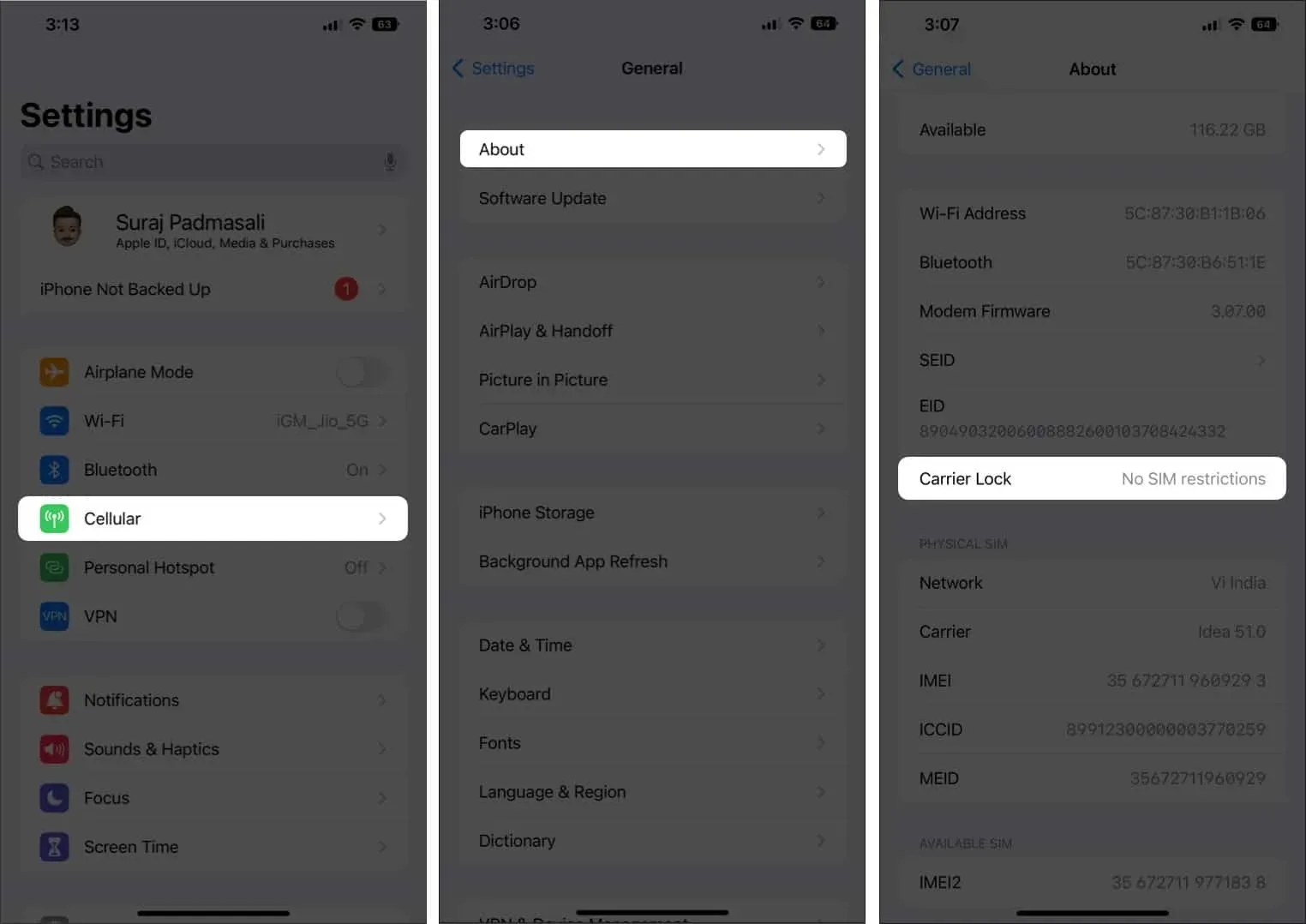As you prepare for your next international trip, get your iPhone ready. To be safe, connected, and stress-free, you need to know the basic iPhone settings for international travel. This will help you avoid unexpectedly high bills when you return. Here I will tell you some cool tips and tricks for using iPhone while traveling abroad.
- Use Airplane Mode and Wi-Fi at the same time
- Use Wi-Fi-based services and apps for international travel
- Turn off data roaming or buy a data roaming plan
- Benefits of using eSIM on iPhone
- Make sure your iPhone is unlocked
- Reset data usage statistics
- Update your multi-factor authentication procedures
1. Use Airplane Mode and Wi-Fi at the same time
Using Airplane Mode and Wi-Fi ensures that overseas fees are not included in your iPhone bill. You can use mobile data or receive calls if your phone is receiving a call in another country. Therefore, connecting to Wi-Fi can help you avoid foreign data charges when using your phone’s apps.
So how do you use Wi-Fi and Airplane Mode at the same time? Here’s how to do it:
- Swipe up to open Control Center.
- Tap the Airplane and Wi-Fi icons.
Also, you must turn off cellular data. You can do this from the Control Center or from Settings:
- Go to settings. Tap Cellular Data.
- Now turn off cellular data.
But these iPhone settings for international travel restrict you from making or receiving regular phone calls or text messages (with the exception of iMessage). You can use any Wi-Fi enabled apps (such as Facebook, Instagram, etc.) as long as you are connected to a Wi-Fi network. Also, add your tickets to your Apple Wallet to avoid inconvenience.
2. Use Wi-Fi based services and apps for international travel.
If you are going to a place where you expect to have access to Wi-Fi, you should use it because it allows your iPhone to surf the Internet instead of accessing your mobile data. Plus, the best part is that your iPhone already comes with several built-in Wi-Fi based apps. With iMessage, you can send SMS over Wi-Fi (on other iPhones only).
Similarly, FaceTime allows you to make networked voice and video calls. Make sure you have enabled iMessage and FaceTime in settings. Alternatively, you can view the options for sending messages using iMessage in Settings → Messages → Send and Receive. Sometimes our SIM card gets disconnected from the network. In this case, you can use your email address to send the text.
If you’re a Big 4 customer, another benefit of using your iPhone internationally is Wi-Fi calling. Basically, this native carrier feature allows the native app to make audio calls over Wi-Fi when there is no cellular service. In addition, you can use other Wi-Fi enabled travel apps for iPhone, such as Skype, WhatsApp, Facebook Messenger, etc. to make calls and text messages.
This will reduce your data usage, whether you buy a local SIM card or an eSIM data plan. We will talk about the benefits of eSIM later in this post.
3. Turn off data roaming or buy a roaming plan
We all know that data roaming helps you access the Internet in other regions. But connecting to affiliate networks abroad leads to huge bills. So, should data roaming be turned on or off on iPhone? Well, always turn off data roaming on your iPhone to avoid international charges. To do this, do the following:
- Open settings.
- Tap Cellular Data.
- Now go to cellular settings.
- Then turn off the toggle next to Data Roaming.

Also, for added security, turn off cellular data completely. However, you will need to enable it if you have an eSIM data plan.
If you want to use cellular data while on the go, you can choose an international roaming plan offered by your carrier.
4. Benefits of using eSIM on iPhone
eSIM is a standard digital SIM card supported by carriers worldwide. iPhone XS and later models support eSIM. And the US variant of the latest iPhone 14 does not support conventional SIM cards and only supports eSIM.
When traveling abroad, an eSIM provides several benefits. Since it cannot be taken out, it is more secure than a real SIM card. So you don’t have to buy, carry or trade physical SIM cards. In addition, your carrier may allow you to manage your eSIM plan online and may provide free international roaming with data plans.
The functionality of international roaming with an eSIM is identical to roaming with a physical SIM card. In addition, you can have two active eSIM plans when using a data-only eSIM as an additional line. You only need to change your iPhone settings for international travel. To select a data line, go to Settings → Cellular → Cellular (or mobile) data.
5. Make sure your iPhone is unlocked
Carriers block phones to keep customers on their network. If your iPhone is locked to a carrier, it works like a real SIM card and can only be used by that carrier. But you can’t use local SIM cards or even eSIM services while traveling internationally. Therefore, if your phone is locked, you will have to use Wi-Fi or pay for international roaming.
Also, Apple recommends contacting your carrier to unlock your iPhone. It is often enough to simply say that you are going abroad and need a local phone number. But if they mind, there are several third-party alternatives. But how to check if your iPhone is unlocked?
- Go to settings. Tap General.
- Then click “About”.
- Scroll down to see if there is a “No SIM restrictions”next to Carrier Lock. If so, your iPhone is unlocked.

6. Reset data usage statistics
It’s a good idea to keep an eye on your data consumption while you’re on the go. In addition, you can identify applications that consume a lot of data and stop them. To reset app statistics before international travel, do the following.
- Open Settings, then go to Cellular Data.
- After that, scroll down and click “Reset Statistics”. This will allow you to see exactly how much data you are using while traveling.

7. Update your multi-factor authentication procedures
In most cases, multi-factor authentication or two-step verification sends you a one-time password to verify your identity and protect your accounts from fraud. However, you can block your email at a critical moment if you do not have a network abroad. So update your 2FA logins to be easily accessible to avoid this.
Get a Google Voice number by temporarily submitting your phone number to Google. Or install an authentication app like Google Authenticator or LastPass Authenticator.
So that’s all for today, friends!
Preparing for your next trip also includes setting up your iPhone. Knowing what to turn off on your iPhone when traveling internationally can be convenient, save your pocket, and keep you connected on the go. Please let me know in the comments section below if you have any doubts.


